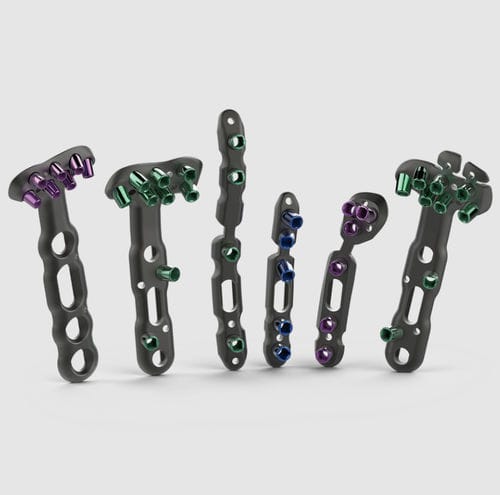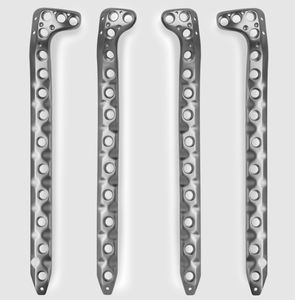
Radius compression plate DVR®distallockingnon-locking
Add to favorites
Compare this product
Characteristics
- Applications
- radius
- Part of bone
- distal
- Locking
- locking, non-locking
- Materials
- metallic
- Length
48.9 mm, 175.3 mm
(1.9 in, 6.9 in)- Number of holes
3 unit, 4 unit, 7 unit, 12 unit
Description
Over the past two decades, DVR has helped change the treatment of distal radius fractures, continually being improved and adapted to provide a broad range of surgical options to help the needs of your patients.
Features
Anatomic Design
Provides a low-profile, anatomically designed implant that mimics the bone and serves as a template to aid in reduction. The plate is contoured with respect to the watershed line to enhance buttressing and load transfer.
F.A.S.T. Guide® Technology
F.A.S.T. Guide Technology is designed to simplify and speed up surgery allowing easy drilling of fixed angle locking screws.
Variable Screw Options
Locking, non-locking and multi-directional screw options are available to provide optimal fit for the fracture type. For efficiency, all screw holes accept the 2.7mm screws, requiring a single drill bit and driver. Pegs and locked screws have tapered heads and triple-lead threads to create a stiff construct designed to facilitate easy insertion and removal. Cross-locking oblique screw options are designed to provide three-dimensional fixation in the commuted fractures and osteoporotic bone.
Benefits
Efficient
All locking, non-locking and oblong holes accept the 2.7mm screws, requiring a single drill bit and driver. This allows surgeons and OR staff to streamline workflow, minimising the need to interchange instruments during the procedure. Additionally, the system indicates side-specific implants by colour-coding creating an efficient and easy-to-use system.
Optimal Fixation
A narrow shaft is designed to make it easy to fit the plate to bone without compromising fixation options.
Catalogs
No catalogs are available for this product.
See all of Zimmer Biomet‘s catalogsRelated Searches
- Bone plate
- Compression plate
- Metallic compression plate
- Locking compression plate
- Titanium compression plate
- Distal compression plate
- Agitator
- Proximal compression plate
- Forearm compression plate
- Benchtop stirrer
- Arthrodesis nail
- Tibia compression plate
- Radius compression plate
- Femoral stem
- Metallic intramedullary nail
- Blender
- Non-locking compression plate
- Proximal fixation intramedullary nail
- Knee prosthesis
- Acetabular prosthesis
*Prices are pre-tax. They exclude delivery charges and customs duties and do not include additional charges for installation or activation options. Prices are indicative only and may vary by country, with changes to the cost of raw materials and exchange rates.






